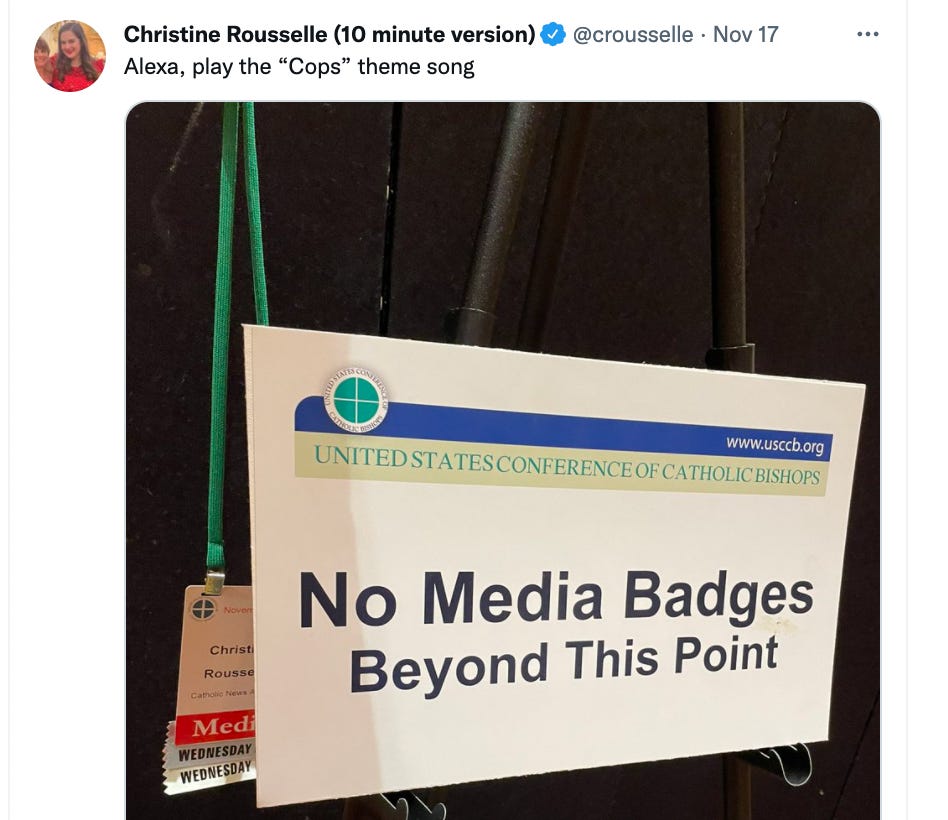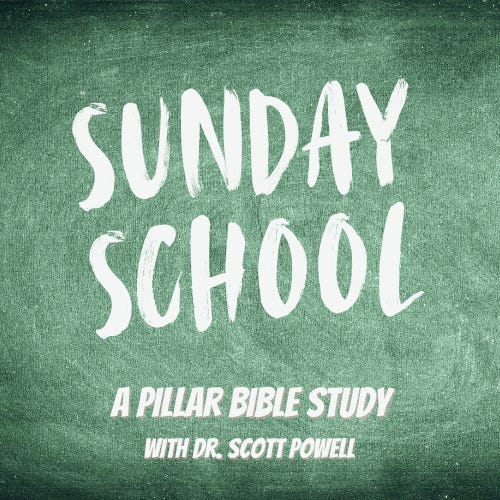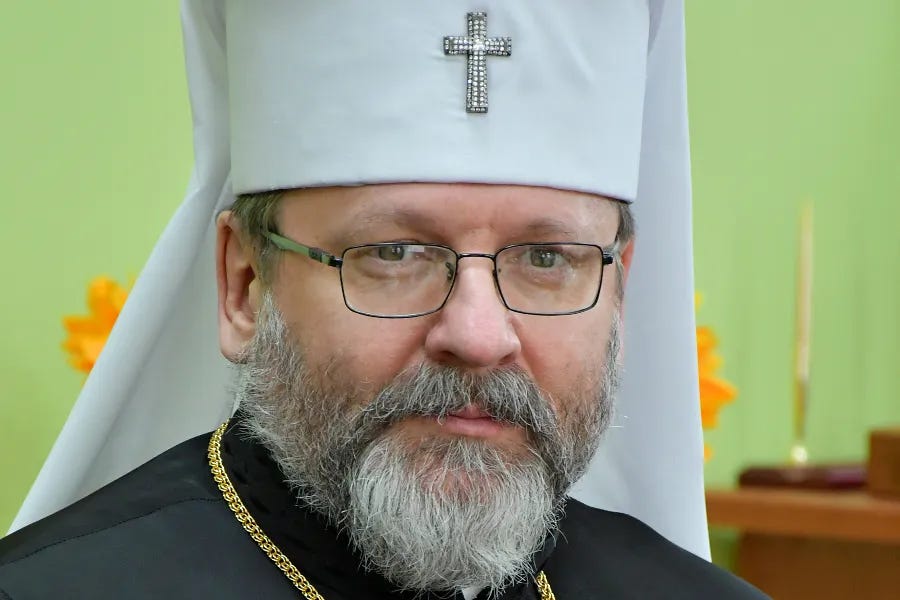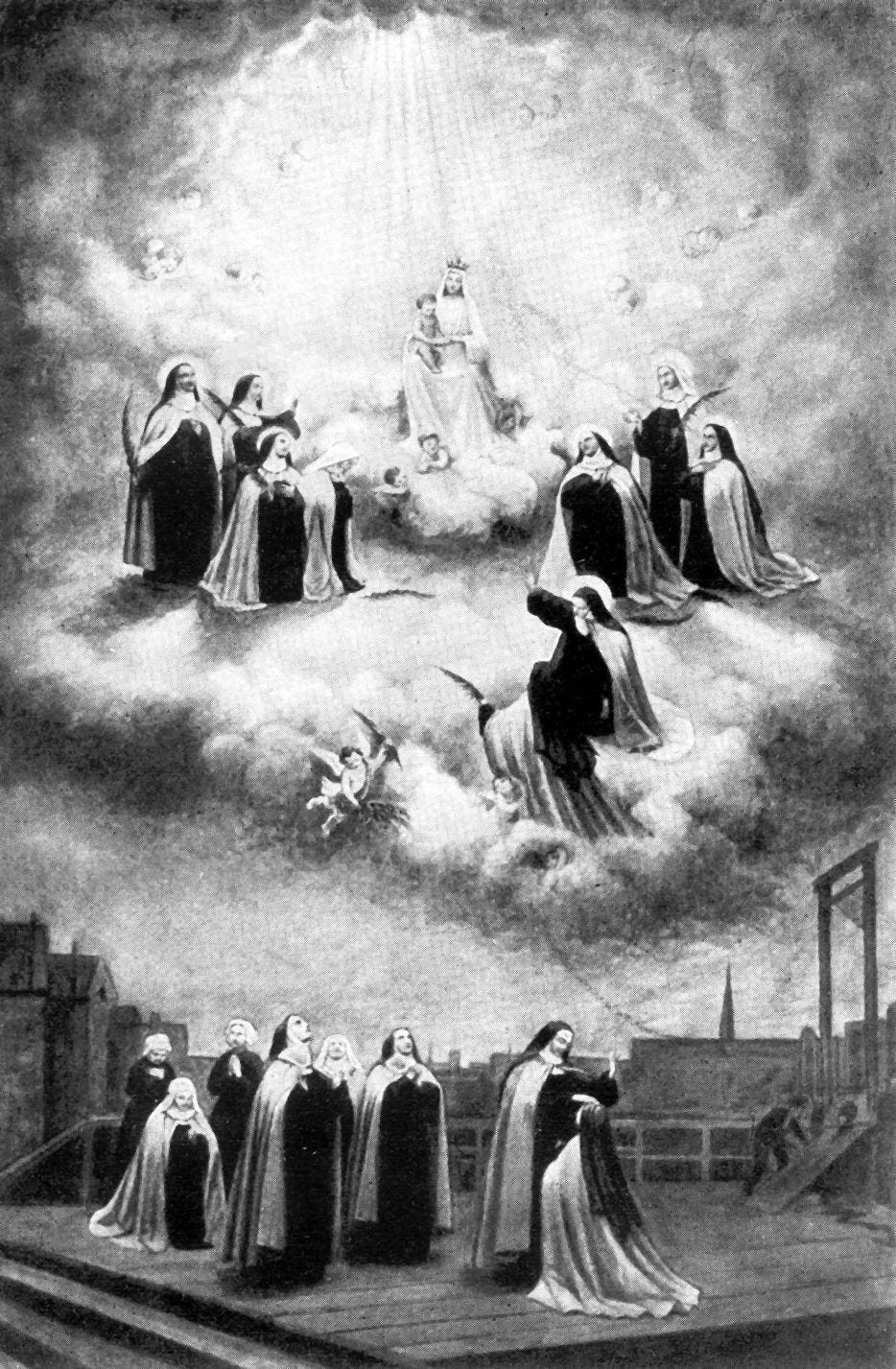An increased number of closed-door meetings at the U.S. bishops’ conference helped bishops to hash out disagreement and forge unity, several bishops told The Pillar this week.
And while the USCCB says it is not planning to regularly increase the number of “executive sessions” at its semi-annual meetings, several bishops say they appreciate talking through issues without press, observers, and television cameras in the room.

“I’ve thought for a long time that it would be helpful to have more executive sessions [at USCCB meetings],” Archbishop Salvatore Cordileone of San Francisco told The Pillar Nov. 21.
“I would favor basically what we did this year: begin Monday morning with prayer, and then begin the general assembly in the afternoon with an executive session. Depending on the need, that could be all afternoon, or only part of it. And then end with an executive session, as we have been doing all along. Adding any further time to that for executive session should be determined ad hoc,” the archbishop added.
The archbishop’s comments came after the fall assembly of the U.S. bishops’ conference, held in Baltimore last week. In a change from the USCCB’s ordinary meeting schedule, the meeting began Nov. 15 with a bishops-only morning prayer session, which included adoration of the Blessed Sacrament, confessions, and preaching from Louisville’s Archbishop Joseph Kurtz.
The meeting also included an executive business session for bishops on Monday, a short executive session Tuesday afternoon, and a concluding executive session on Thursday, Nov. 18.
In recent years, twice-annual plenary meetings at the U.S. bishops’ conference have ended with half-day executive sessions, followed by some periods of prayer for bishops. Non-executive portions of the meeting are open to the media and observers, livestreamed by the bishops’ conference, and broadcast on a Catholic television network.
The bishops’ meeting this month was the first in-person assembly of the USCCB since November 2019, because of the coronavirus pandemic.
There was more time on the schedule for executive sessions at this month’s meeting than is usually allotted. The executive sessions were also scheduled intermittently throughout the four-day meeting period, instead of as a singular block at the meeting’s conclusion.
Bishop Joseph Tyson of Yakima, Washington said he thought the change was a good thing.
It’s “important for the men to talk freely, brother-to-brother, about their thoughts and freely debate key questions,” Tyson said, adding that executive sessions make free exchange an easier prospect.
Bishop Walker Nickless of Sioux City, Iowa, agreed:
“The time we spent in executive session was a great help, to enable us to share freely and at the same time address some of the issues that were presented to us. Knowing that there were no cameras present gave us a chance to interact in an honest and fraternal way,” Nickless said.
“We certainly don’t want to hide things from the faithful, but at times, being able to meet without the cameras rolling gives us the opportunity to speak a little more freely,” the bishop added.
Bishop Kevin Rhoades of Fort Wayne-South Bend told The Pillar that executive sessions allow bishops to think through problems without anxiety about media scrutiny.
“There’s times where you just like to talk without having to be so careful with everything you say because it’s going to be reported in the media. It’s less stressful.”
Rhoades acknowledged that some bishops during open meetings can become distracted by media attention. Others “may not be comfortable with the cameras, and therefore not standing up [to speak], and they may have something to contribute.”
An increase in executive sessions at this month’s meeting is generally understood to have been influenced by a desire to see bishops discuss their controversial document on the Eucharist in private, a change from the pointed and barbed debate over the document at a June virtual meeting.
But several bishops told The Pillar that closed-door discussion about the document was more charitable and calm than the June debates had been. Bishops credited time spent in prayer together for the change in tone.
“We had a chance to move graciously into prayer and then follow up by our meetings,” Bishop Nickless explained.
“There was definitely a sense of prayerfulness and fraternity because we began with prayer. We wanted the Holy Spirit to guide us and lead us and that was very evident.”
Rhoades said the prayer session meant that “from the beginning, [the meeting] becomes a process of asking the Holy Spirit’s guidance. I think that’s really important, and we should do it again.”
Cordileone told The Pillar that Pope Francis had encouraged more periods of prayer.
“When we had our ad limina visits in 2019 and 2020, the pope told us that in Argentina the bishops’ conference always gathers for a day of prayer before their meeting begins. This, then, gave us vision and inspiration to do something similar. I consider it a great step forward that we BEGAN with prayer. It set a whole different tone for us. I feel confident that this will be the normal way of doing things going forward,” the archbishop wrote in an email.
During the USCCB’s meeting this month, conference officials said they are not planning to increase the number of scheduled executive sessions at future meetings.
“There is no plan to [increase the number of executive sessions in future meetings.] There’s been no request to. We do it as needed, and it’s the first time we’ve been back together in a while,” Bishop Michael Burbidge, outgoing communications committee chairman, said in a Nov. 16 press conference.
USCCB president Archbishop Jose Gomez of Los Angeles said the 2021 meeting was unusual because the bishops had not met personally for two years.
“We were not able to have the conference in person for two years, so it’s just that there are some new bishops and we are just trying to strengthen our fraternity as bishops. There’s nothing extraordinary. I don’t expect that in the future...well, it really depends on the needs of the bishops in future years,” Gomez said.
USCCB public affairs director Chieko Noguchi told The Pillar Tuesday that the number of executive sessions at each meeting is set by the conference’s administrative committee, which sets the agenda of the meeting “based upon the particular business before it.”
“The bishops had not met in person in two years because of the COVID-19 pandemic, so the agenda for this November’s meeting was heavier than usual; the number of executive sessions reflected the uniqueness of this meeting,” Noguchi explained.
During the two years in which bishops did not meet, sharp division emerged over the conference’s response to the Biden administration, led by a pro-choice Catholic, and especially over the drafting of a treatment on “Eucharistic coherence,” which aimed to discuss whether Catholics who oppose the Church’s teaching should be admitted to the Eucharist.
Bishops told The Pillar that being together in person, without cameras rolling and journalists scribbling notes, helped to quell that division.
“Pope Francis warns us against a parliamentary process,” Bishop Tyson explained.
“I think that’s where we were at prior to this USCCB. There was a lot of maneuvering about statements and directions without input from the broader body of bishops. Actions were sometimes taken without even consultation with the administrative committee.”
“This feels more synodal to me. We prayed. We were in communion with Jesus Christ. We provided an opportunity for folks to lay the tensions on the table away from cameras,” the bishop added.

But while bishops praised the change, journalists and observers at the meeting expressed concern that an increase in the number of executive sessions at meetings could hamper the bishops’ commitment to transparency — especially as groups protesting outside the conference called for more transparency, not less, from bishops.
Rhoades said he understands that concern.
“I mean, I think you could find a balance. You know, we want to have a level of transparency — that's important. But I think there should also be an opportunity where bishops can share without having to think, well, you know, ‘Is this the media’s agenda?’”
Cordileone said that from his view, the bishops’ plans shouldn’t be directed by criticisms about transparency.
“I would hope that people understand that we need to have time to speak confidentially with one another. Those who suspect us of having a lack of transparency are going to think that whether we have extra executive session or not – that is, even if the whole meeting were public, it’s not going to convince people who are suspicious that we are not being transparent,” Cordileone said.
“A certain balance is necessary. What I propose is simply a matter of adding time for executive session at the beginning of the meeting, in addition to the end. The fact that most of the meeting is in public session I think is a strong sign of good will on the part of the bishops that we want our people to know what’s going on with our conference,” the archbishop added.
For Tyson, an increase in the number of executive sessions might change the way bishops engage outside of USCCB meetings.
“I kind of resent bishops carrying on theological debates through the media before we are even in the room. I also do not think our folks need to hear about our disagreements. They need to hear a united teaching voice,” Tyson said.
Bishops said they are not sure what to expect on the agenda at future meetings. But each bishop The Pillar spoke with emphasized that beginning a meeting with prayer was a positive change they’d like to see repeated.
“We came away this November with better episcopal coherence,” Tyson told The Pillar.
Bishop Nickless said the November meeting “was one of the best USCCB meetings that I’ve been to as a bishop.”
The bishop continued:
“I’m convinced that the way we began with prayer and adoration and confession and the liturgy of the hours made a huge difference. After Covid, we longed to see one another face-to-face and the fraternity was evident. I’m also very grateful for those many people who are praying for us during the meeting. I came away grateful and hopeful.”
Ed. note: This report was updated Nov. 23, to include comments from USCCB spokesperson Chieko Noguchi.




